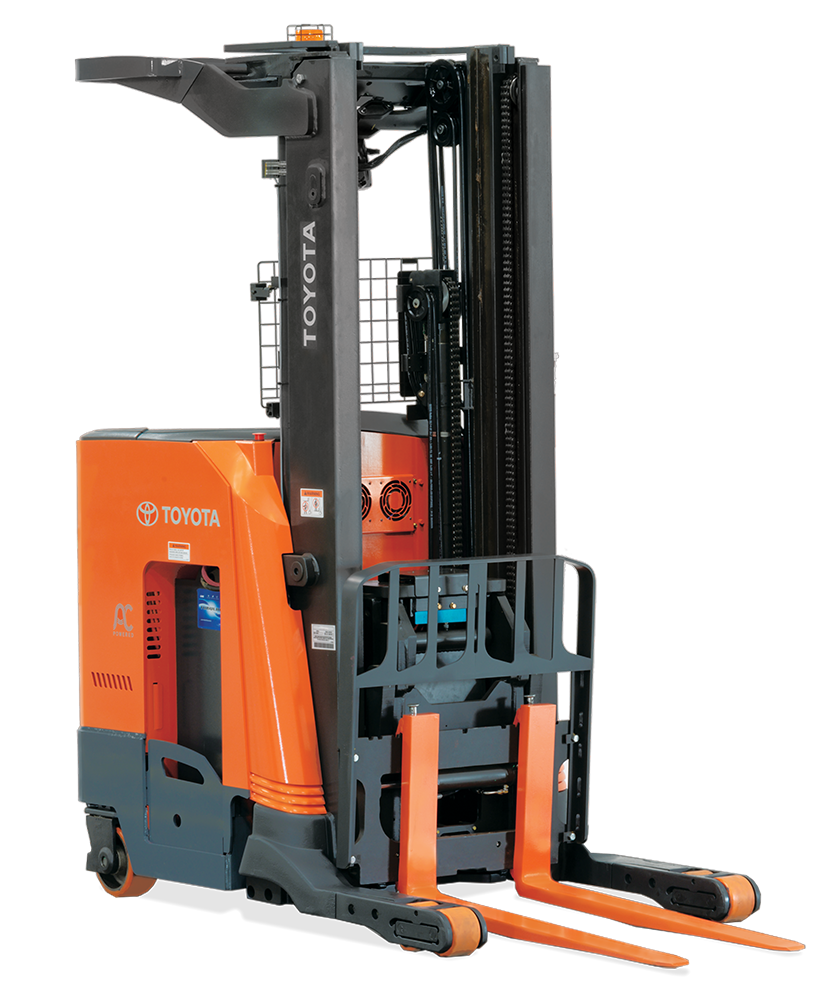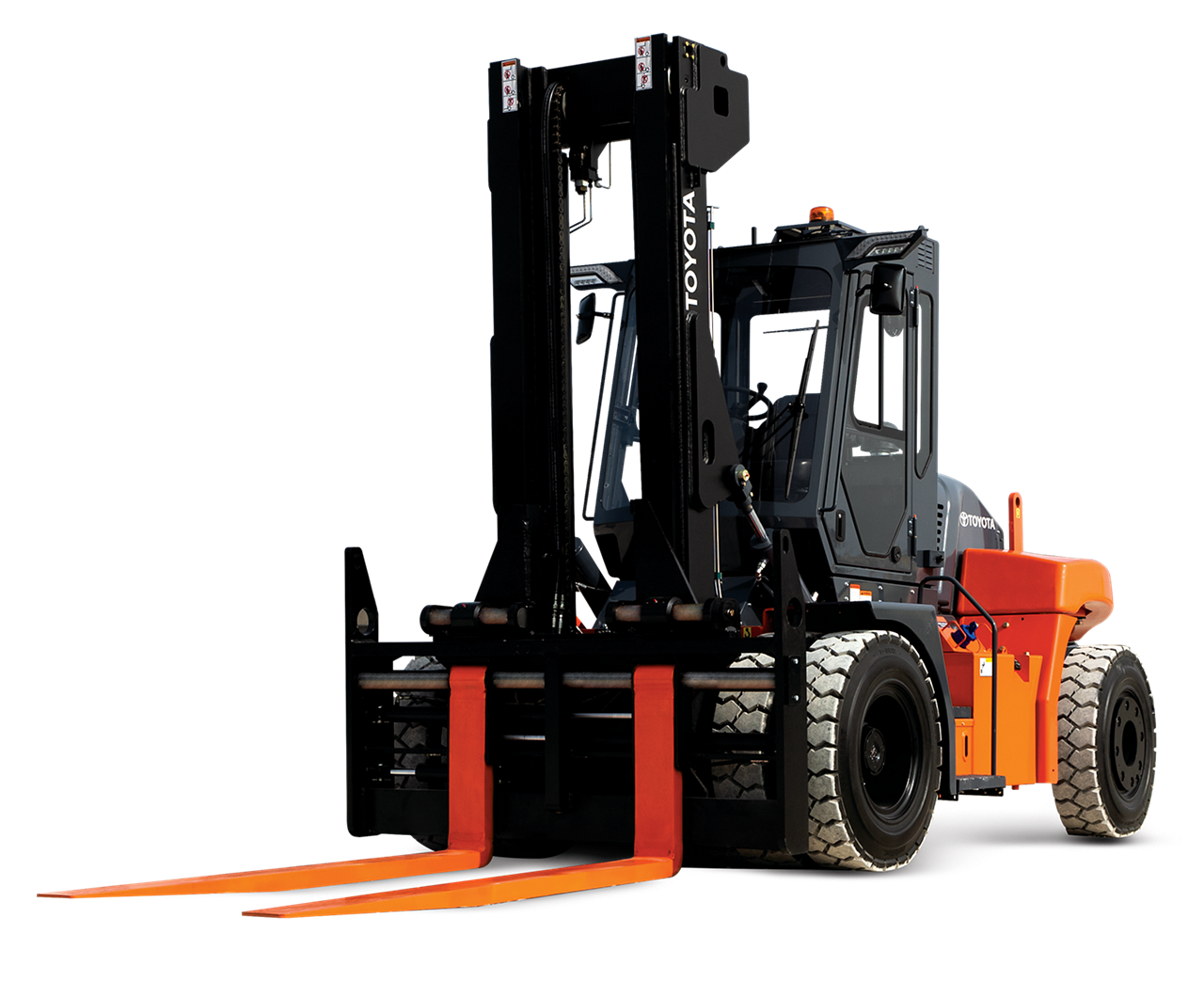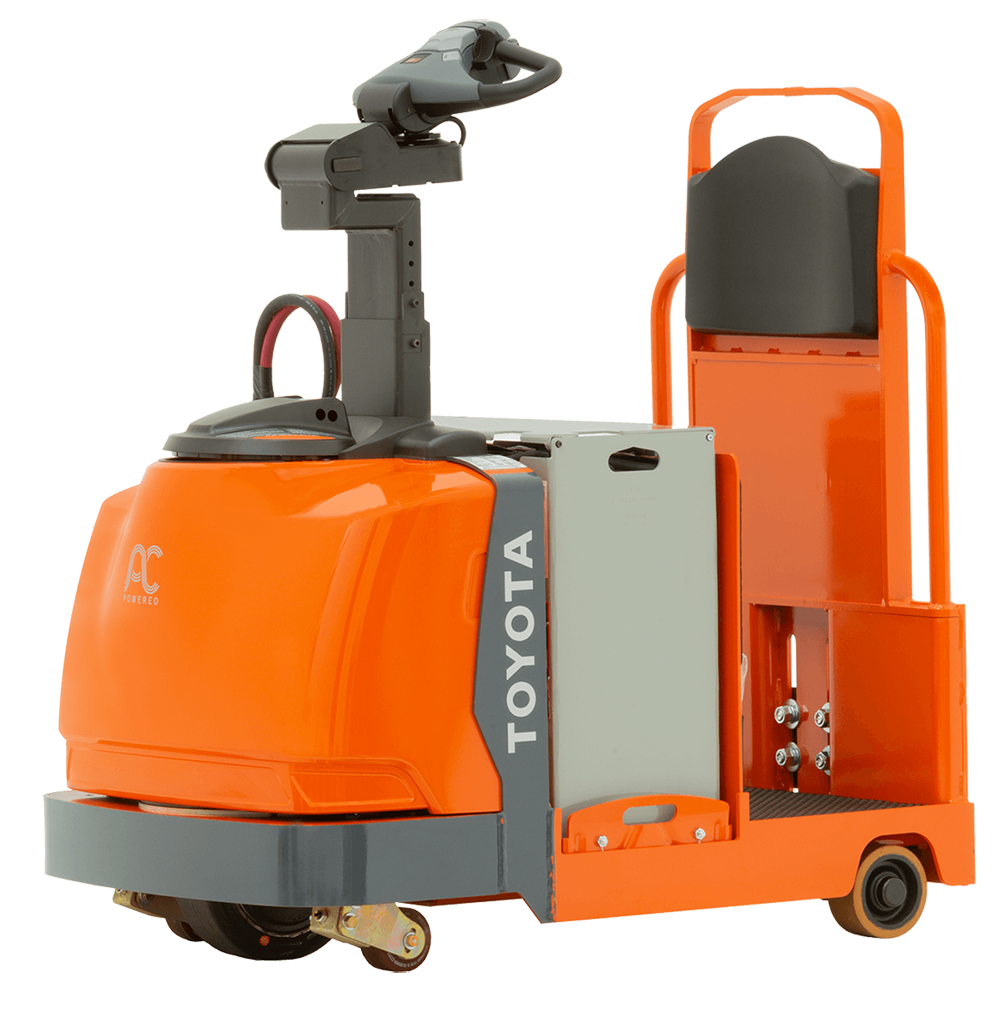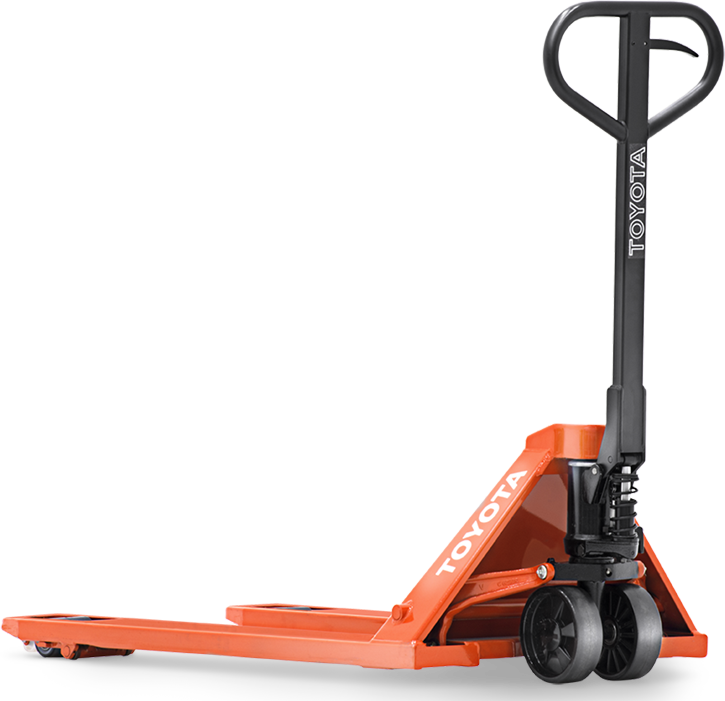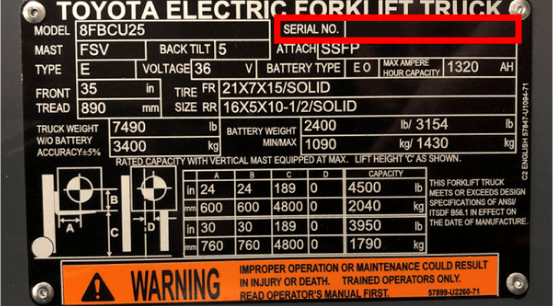Please click below to sign in to your MyToyota account
Lithium-Ion Technology: The Next Generation Of Forklift Efficiency

As environmental concerns and fluctuating oil prices continue to push consumers toward alternatives to traditional internal combustion (IC) engines, forklift operations have increasingly looked toward electric vehicle solutions over the last decade.
Customers are now buying far more electric forklifts than those powered by IC engines. Electric forklifts now make up 70 percent of total sales, and with increasing demand for electric power comes a need to provide a solution that provides all of the benefit of IC without a loss in productivity.
Lead acid batteries have been a capable solution for years, and they continue to dominate the market today. It is estimated that lead acid batteries power 90 percent of electric forklifts in operation.
But a new player has emerged on the scene in recent years and is revolutionizing the way some companies do business. Lithium-ion battery (LiB) technology represents the next generation of forklift efficiency, and experts say that LiB market share in electric forklifts will grow significantly over the next several years.
So, what’s all the hype about? Does lithium-ion make sense for every customer? Is it true that lithium-ion batteries are better for the environment than lead acid? Here’s what experts at a few of the top LiB manufacturers had to say.
Does Lithium-Ion Technology Make Sense for Every Customer?
While lithium-ion battery technology offers unique benefits, experts admit they don’t always make sense for every customer. Each battery manufacturer is different in how it determines whether LiB is a good fit for a specific customer.
Navitas Systems uses a calculation called Equivalent Battery Usage, or EBU, to determine if LiB is the right solution for a given customer. Navitas uses a threshold of 1.6 EBUs, meaning customers using their lead acid batteries more than an average of 1.6 times per day is a potential fit for LiB. If a customer’s EBU number falls below 1.6, however, Navitas will likely recommend that the customer continue using lead acid.
“Typically, multi-shift – 2-3 shift applications – are above 1.6 EBUs,” said Samer ElShafei, Navitas’ Vice President for Commercial and Industrial Sales. “We deal with automotive, general distribution, food distribution, retail, paper industries. It’s well-rounded. It’s really any type of application that operates equipment more than 1 shift a day.”
Electrovaya doesn’t have a specific metric it uses to determine the viability of LiB for a given customer. Instead, the company advises on more of a case-by-case basis.
Electrovaya initially offered sample batteries to customers and let them use them for 2-3 weeks. Then, based on the data collected from the battery, they could determine whether or not the battery was well suited to that customer’s application.
“Based on the lessons learned from these trials and the wealth of data, we can now do a really good job prescribing the right solution for you,” said Dr. Jeremy Dang, Electrovaya’s Director of Business and Project Development. “We can talk to a new customer today and ask them a few questions like, ‘how many trucks do you have? How many chargers? How many lead acid batteries? How many shifts?’ And from there, we can prescribe a solution that is right for them.”
Flux Power offers a similar view. The company installs its own telematics on the forklifts, the batteries, and the chargers to help determine if their batteries are right for a particular customer.
Flux conducted a survey with a small Costco distribution center that had eight units and was operating at about a shift and a half. After testing LiBs on the fleet, Flux recommended they stay with lead acid.
“It didn’t make sense for them to spend $20K for a big battery for some of their stand-up units,” said Tod Kilgore, Flux Power’s Director of Sales. “The lead acid out right now is very good technology, but there’s a time and a place for it. The same is true with lithium. If you’ve got smaller fleets and a single shift, you don’t go with lithium.”
The reason lithium-ion doesn’t make sense for every customer today is simple – the high upfront cost and the high variability in return on investment. LiBs are more expensive than lead acid batteries, and they’re best used in high-throughput applications, experts say.
“The higher the EBU, the quicker the return,” said Navitas’ ElShafei. “Generally, at greater than 1.6 EBUs, we’re seeing positive returns on investment in 18-24 months. The primary thing is finding the right application for the right technology.”
“We do often get inquiries from customers who are interested, and many times, we do tell them that this is not the right product for them based on their operation,” said Electrovaya’s Dang. “If you’re a one- or a two-shift operation, we find that the return on investment is not as great. In those cases, even if they’re still interested, we minimize the capital cost by offering a smaller battery and play around with the battery/charger ratio such that they don’t have too many chargers. But most of the time, we look for customers who are of a 24/7 or 24/6 nature. This is where you’re really going to see the true benefit of lithium.”
Exploring the Target Market for LiB: More Than Just Cold Storage
There are quite a few applications where lithium-ion makes sense – but some are garnering more attention of battery manufacturers than others.
The cold storage industry is the most obvious because of lithium’s ability to perform in a wide range of temperatures and environments.
“In cold storage, lead acid batteries don’t perform that well,” said Dang. “The impedance and impact on capacity is a killer for them.”
Lithium-ion batteries, however, can be manufactured with heaters installed to thrive such conditions. Nearly all of Electrovaya’s batteries, for example, come with an ingress protection (IP) rating of IP65, meaning the battery’s internal components are protected from water and condensation, as well as in temperatures as low as minus-35 degrees Celsius.
IP ratings range from 0-69, and are used to qualify levels of dust- and water-sealing effectiveness. LiBs for cold storage applications typically have an IP rating* between 65 and 67. A rating of IP65 means the product is “water resistant”, a rating of IP66 means it is “water resistant against powerful jets”, and IP67 means the product is protected from “immersion between 15 centimeters and 1 meter in depth”. For comparison, modern cell phones typically have an IP rating of 67 or 68, which protects the product from “long-term immersion up to a specified pressure”.
“Some of our competitors are offering two separate battery solutions based on the temperature application,” Dang said. “For cold storage customers, they’ll provide a battery with some sort of heater, and in an ambient environment, they’ll take away the heater. In our case, we have a one-size-fits-all kind of solution. We don’t care if it’s a minus 35-degree application or a 35-degree application, we prescribe the same battery model.”
Cold storage makes sense for LiBs, but the applicability of lithium-ion is much broader than just one industry, Navitas’ ElShafei says.
“It’s really associated with how much energy is being used,” he said. “It has great application and returns in the cold storage industry, but the applicability is much broader than cold storage. Some might reference it because that’s their initial target market where they focus their product or their efforts on.”
Another area where LiBs are a good fit are for third-party logistics companies.
“Those are some of our heavy-duty users,” said Dang. “It’s the nature of the business. They are moving goods all the time, so they may require heavy-duty, high-capacity batteries, something lead acid won’t necessarily be able to handle.”
The Transition To LiB: ‘A Culture Change’
Most companies have been using lead acid batteries for many years, so the decision to transition to a new technology isn’t always easy – and the transition itself isn’t always seamless.
Perhaps the top factor for customers considering the transition?
“Obviously the cost,” says Navitas’ ElShafei. “For the new technology, it is more costly up front. If the customer is able to look at the investment from a total cost of ownership, then that helps out with lithium rather than just the upfront price.”
Added Flux Power’s Kilgore: “The thing about lithium is you need data from telematics because your initials costs are so high. We’re not going to sell a battery to a customer that doesn’t make sense or isn’t going to generate a return on investment.”
If a customer determines LiB makes sense for their application after analyzing the total cost of ownership, there are still several things to consider in preparation for the transition. Adopting LiB requires significant training, reconfiguring of facilities, and more.
For example, forklift operators need to be trained on lithium – especially if they are unfamiliar with opportunity charging. With LiB powered forklifts, operators are asked to plug the batteries into a charger every time the forklift is not in use – even if it’s just for a short break.
“This is not something that they’re used to. So, in the first two months, operators were not plugging in their batteries, and batteries were too drained for the next shift,” says Electrovaya’s Dang. “It took two months to fully train them, show them that it’s very important to plug in during any break, whether it’s a five-minutes or 30 minutes. In that time, even though it doesn’t seem like much, the battery will recover a lot of energy that was already used, so it’s beneficial to the next person that wants to use the truck.
“With every customer we’ve done this with, there’s always a culture change. The first two months will be rough, but after the first two months, things will be a lot smoother, and you’ll see the true benefit of our lithium-ion battery system.”
Regardless of the battery type, though, Navitas’ ElShafei says opportunity charging will become more and more common in the future – even for lead acid batteries. While there may be a learning curve for operators, there are undeniable benefits to an opportunity charging approach.
Opportunity charging offers the ability to decentralize the charging location by having multiple charging stations.
“We have some situations where customers have smaller charging areas and they may have 20 trucks park in one area, but they do that in 5 different areas within the facility,” ElShafei says. “We’ve seen other facilities where they spread out chargers all throughout their manufacturing facilities and they don’t even need to take the truck to the break room in that situation. They might park it at a piece of equipment on the manufacturing line. The bottom line is opportunity charging offers a lot of flexibility.”
Battery manufacturers can help make the transition from lead acid to LiB smoother by helping companies train their employees and re-think their facility layout.
“In the beginning, the training was a bit ad-hoc, but now we do have formal training programs – both with the customers’ maintenance team and master trainers, and with some of the forklift dealers themselves,” says Electrovaya’s Dang. “In most cases, our customers install the chargers right beside the break room or by the bathroom because it’s more practical that way. It’s an easy way to remind and encourage operators to always plug the batteries in. But in some cases, customers don’t have the flexibility to add chargers to a specific location due to limitations in their facility.”
Flux Power conducts a full site survey prior to any installation to come up with a custom design that works based on the customer’s unique operational needs and concerns.
“It’s a learning experience, and education is a big deal. It’s a totally different technology, and a totally different mindset,” said Flux Power’s Kilgore. “Most customers have forklift operators that have been working for 10 or 20 years with lead acid on their mind, and it’s not easy to change that mindset. It’s like going from a cassette to a CD.”
But the experts we talked to all agreed: Retraining and rethinking facility layouts are not deterring customers from shifting to LiB.
“Our customers are understanding, they’re quite progressive. The number one factor is cost,” says Electrovaya’s Dang. “Not everyone can afford or has the budget to buy lithium, especially for a smaller operation. But for someone like Amazon or WalMart, a 24/7 distribution center, the return on investment is clear, and they have the budget to afford the initial high capital investment.”
Not Always Greener
There are many reasons why the material handling industry has shifted to electric products. Electric forklifts require significantly less maintenance, offer lower operating costs than IC products, and are quieter.
But one of the top reasons for the gradual shift to electric? Companies are becoming more and more conscious of how they’re impacting the environment, and electric forklifts produce zero emissions during operations.
Because lithium-ion batteries are more efficient than their lead-acid counterparts, it’s reasonable to think that LiBs would be a greener option. But that’s not always the case – LiBs have their own environmental concerns.
The major components of a lithium-ion cell require the mining of lithium carbonate, copper, aluminum, and iron ore. Lithium is only a minor portion of the battery cell by mass, so the environmental impacts of copper and aluminum are much more significant.
The biggest differentiator, though, is the recyclability of the batteries. Lead acid batteries have been around for a long time, and as a result, have much more mature recycling programs. Lead acid batteries are recycled approximately 99 percent of the time, compared to LiBs, which currently have a recyclability rate of less than 5 percent.
“It definitely depends on how the lithium is mined and how it is recycled and returned to the environment,” says Electrovaya’s Dang. “You only find a select few vendors in North America that are willing to recycle LiBs. But I believe that as the world transitions more towards using lithium, more recycling companies will pop up, and better recycling programs and technologies will be developed.
“There are some areas in which lead is greener than lithium, but the area in which lithium is really more environmentally friendly is in the application or the use of. Our LiBs are completely sealed with no gassing.”
As recycling programs are developed for LiBs, battery manufacturers are exploring unique ways to give these batteries a second and third life.
Flux Power asks that their customers send the batteries back when they’ve reached their limit, and Flux uses them as backup power for solar energy.
Navitas and Electrovaya are also finding ways to refurbish the used LiBs when they reach the end of their first intended use – which usually means a high-throughput operation.
“I think of the analogy of a cell phone,” says Navitas’ ElShafei. “You personally use your cell phone a lot, and at some point, you might say ‘my iPhone isn’t lasting as long anymore and doesn’t get me through my day’, so because of the battery life, you get a new phone. That will happen with a lift truck as well. There’s certainly a market for people who don’t use their iPhone as much as you do. Maybe they use it 4 hours out of the day and you use it 8-10 hours a day. The same is true with lift trucks. Maybe they put new software on it, they clean it up, they repaint it, they put new contactors and a fuse in it, and then they resell it to a 1-shift application that just uses it less frequently than the first customer.”
Electrovaya offers up to a 10-year warranty on their batteries. While their oldest battery is currently four years old, Electrovaya plans to repurpose batteries with any remaining life at the end of the 10-year warranty.
“We will find some second life application, whether it’s energy storage or maybe a one-shift operation like a mom and pop shop,” Dang says. “Every year, we do an annual inspection of the batteries. In our most recent inspection at the three-year mark, the batteries had minimal degradation, so they will actually surpass the warranty period. At the 10-year mark, as long as they stay on track, we do not plan on breaking down a battery and recycling it. We plan on repurposing it.
“The beauty of lithium is, depending on the specific lithium formulation and chemistry used, the batteries can last a very long time. In our case, we use NMC, or Nickel Magnesium Cobalt Lithium technology. This chemistry combined with our proprietary formulation permits the battery to last up to 9000 cycles. So, if you’re an operator that uses about 2-3 cycles a day, this battery is going to last up to 12 years, and that’s on the heavy usage side. If you’re a medium-duty user that uses 1-2 cycles a day, you’re looking at way above 15 years here. So, after the 10-year mark, you can definitely see another two years or even more in something such as energy storage.”
The Future of LiB
While the adoption of lithium-ion technology is growing, it still represents a rather small percentage of the material handling industry. Experts expect that to change over the next five years.
“There’s a misconception that in five years, someone can just create a battery that lasts twice as long as the battery previously,” says Navitas’ ElShafei. “Technology takes a long time to develop. With LiB, the technology is here now, and what’s going to happen in the next five years is the availability, the scale, and the distribution of the product will all increase and improve.”
Electrovaya’s Dang expects the price of lithium-ion technology to continue to drop as scale increases.
“It’s not a matter of if, it’s a matter of when and how much penetration this can get into other markets,” says Dang. “It’ll be a good thing for the entire space in general because costs will come down, manufacturers will find more innovative ways to manufacture lithium cells at a higher scale and a lower price. The same is true when it comes to mining the minerals needed to make lithium cells. It’s human nature for us to discover and optimize. The price we’re offering material handling customers today has significantly dropped since 2017.”
Battery manufacturers are thinking far beyond traditional forklifts when it comes to the future of LiBs. Automated Guided Vehicles (AGVs), Ground Support vehicles, public transit buses, and delivery vehicles are just a few areas where experts say LiB technology could be adopted.
“Material handling is the number one space that makes sense, but any vehicle that is actively used for more than 10 hours a day could benefit from lithium,” says Electrovaya’s Dr. Dang. “And in terms of R&D, lithium-ion cells will continue to increase in capacity, so it will be possible to power vehicles like delivery vans and buses safely.”
Flux Power has signed contracts with Delta and Southwest Airlines as they transition into the Ground Support market, and they’ve seen significant traction in the automated guided vehicles arena as well.
“The future of lithium is really big,” says Flux Power’s Kilgore. “There’s great momentum now that all of these industries are getting more and more involved.”
Added Navitas’ ElShafei: “We’re all investing heavily in this market space to be part of the incremental market share conversion from lead to lithium, and from IC to electric. Lithium offers the performance of propane with the benefits of electric – what customer doesn’t want that?”
*International Electrotechnical Commission (IEC) https://www.iec.ch/ip-ratings




